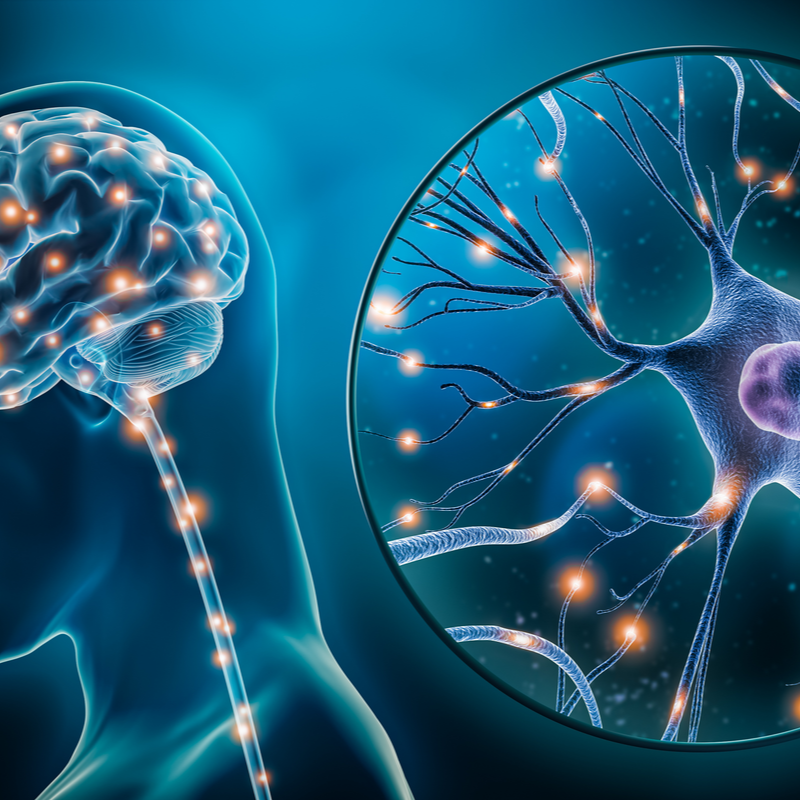
What is a neurinoma?
A neurinoma is a benign, slow-growing tumour of the peripheral nervous system. The peripheral nervous system includes the spinal nerves as well as the cranial nerves, which originate from the Schwann cells and surround the nerve cells. A neurinoma accounts for about 29 percent of all tumours of the spinal cord and 8 percent of all tumours inside the skull. Most neurinomas originate from the 8th cranial nerve and are called acoustic neurinomas. A characteristic feature of an acoustic neurone is a bilateral hearing loss . However, a feeling of dizziness, ringing in the ears (tinnitus) and paralysis of the facial nerves can also occur. Neurinomas develop more frequently than average between the ages of 30 and 50, but they occur rather rarely. A neurinoma is removed surgically, if possible, or treated with radiation therapy .
How does a neurinoma develop?
A neurinoma forms from Schwann cells, which is why the tumour is also called Schwannoma. These are so-called glial cells, which have an important supplying and supporting function within the nervous system. In many cases, however, a neurinoma also forms in the context of a neurofibromatosis of the first or second type. Neurofibromatosis is the name given to a group of genetic diseases in which growths of altered nerve tissue, so-called neurofibromas, form under the skin or in other parts of the body.
In which parts of the body do neurinomas occur more frequently?
In general, neurinomas occur everywhere where nerves of the peripheral nervous system are found. However, they particularly prefer to occur in the head and neck area, but also on the extensor sides of the extremities, i.e. the arms and legs. Furthermore, it is possible that they originate from the spinal or cranial nerves. If the 8th cranial nerve, the auditory nerve (nervus acusticus), is affected, it is a acoustic neuroma in which the cerebellopontine angle is involved. Usually, neurinomas affect sensitive nerves more often than the motor or autonomic nerves. This often affects the sensitive nerve roots in the spinal cord, the so-called spinal neurinomas.
In general, the following distribution of neurinomas can be noted:
- 70 percent of all neurinomas arise within the meninges.
- 20 percent of all neurinomas arise outside the meninges.
- 10 percent of all neurinomas develop outside the spinal canal in the peripheral nerves of the spinal cord.
What are the symptoms of a neurinoma?
A neurinoma grows rather slowly over the years, which is why the disease does not cause symptoms until quite late. Due to the growth of the tumour , healthy tissue can be displaced and paralysis and/or pain in the affected nerve can occur. The symptoms do not always occur in the same place, but depend on the extent of the neurinoma.
A neurinoma located in the lumbar spine can cause chronic back pain by compressing the nerves near the spinal cord. This can even become so intense that it radiates to the legs. If, on the other hand, the neurinoma is located in the cervical spine, the pain can radiate into the arms. Tumours in the thoracic spine, on the other hand, radiate into the chest. A neurinoma located in the spinal canal can lead to paraplegia .
How is a neurinoma treated?
The first choice of treatment will always be surgical removal of the neurinoma. Within the surgical procedure, the nerve fibre, originating from the neurinoma is cut, if possible without affecting the nerve function. As an alternative to surgery, radiation therapy can also be used. In this case, the diseased nerve is irradiated locally by radiosurgery in outpatient sessions.
What is the aftercare like following the treatment of a neurinoma?
The neurinoma should be closely monitored after treatment. This is usually done by a radiologist. In some cases, the patient may feel pain immediately after the treatment . This is mainly the case if the tumour has damaged the neighbouring tissue in its growth. The complaints usually manifest themselves in the form of sensory or speech disorders and a feeling of dizziness. Through follow-up treatment with occupational therapists and physiotherapists as well as speech therapists, it is possible to achieve a high quality of life for the patient. In order to deal with the tumour disease psychologically , it can be useful to attend a self-help group.
Which doctors are responsible for treating a neurinoma?
Neurinomas are first treated by the doctor who diagnosed the tumour disease . If the neurinoma is an acoustic neuroma, the ear, nose and throat doctor is often consulted. Depending on the location of the tumour, the surgical removal of the neurinoma is performed by a neurosurgeon or a specialist who is the expert in his or her field for the affected part of the body. If radiotherapy is performed, a radiotherapist can be consulted.
In general, it is advisable to have treatment of neurinoma carried out in an experienced therapy centre or a university hospital, as this is a rare tumour disease. The treating doctors should therefore have a certain expertise in treatment and, if possible, have already treated other patients with the same disease.
What is the prognosis for neurinoma?
If the neurinoma could be completely removed surgically, the disease only forms again in very rare cases (recurrence). In less than one percent of all cases, the neurinoma can develop into a malignant peripheral nerve sheath tumour (MPNST) . It is also rather unusual for neurinoma to develop metastases . The chances of curing a neurinoma always depend on the tumour size and its location. If the neurinoma is diagnosed and treated early , the prognosis is quite good.
